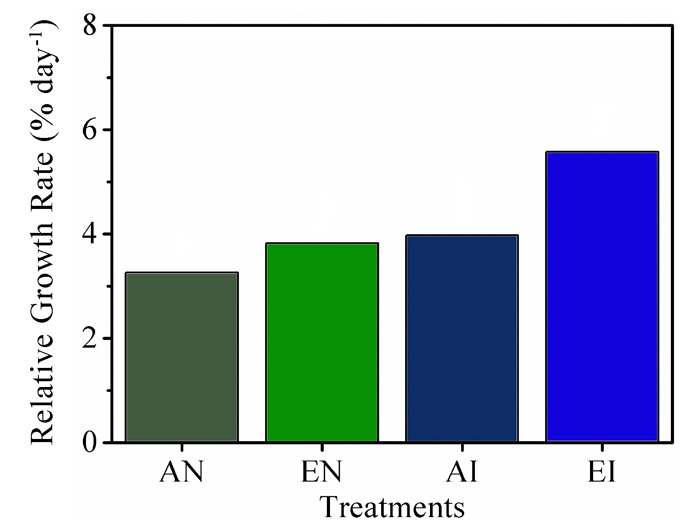| Follow @co2science |
Paper Reviewed
Chen, B., Zou, D. and Yang, y. 2017. Increased iron availability resulting from increased CO2 enhances carbon and nitrogen metabolism in the economical marine red macroalga Pyropia haitanensis (Rhodophyta). Chemosphere 173: 444-451.
Pyropia haitanensis is an economically important marine red macroalga in China that garnered the attention of Chen et al. (2017), who were interested in its ability to cope under future conditions of ocean acidification (seawater pH decline) and associated increases in dissolved iron. Thus, the three Chinese scientists conducted a two-week-long experiment in which they grew P. haitanensis under two CO2 levels (390 ppm, corresponding to ambient air concentrations and 1000 ppm, corresponding to elevated air concentrations) and two dissolved iron levels (normal, or approximately 45 nM and increased, which included a supply of around 80 nM Fe(II) and 80 nM Fe (III)).
The results of the two-week controlled-environment experiment revealed that (1) "the growths of P. haitanensis were significantly enhanced by CO2 elevation regardless of iron levels" and (2) "algal growth was also significantly increased by [increased iron] at both ... CO2 levels," with the greatest increase of growth noted in the high-iron, elevated CO2 treatment (see figure below). Such enhancements occurred because both CO2 and dissolved iron enhanced the photosynthetic rates and synthesis of chlorophyll, producing an increase in soluble carbohydrates necessary to fuel the growth. And given such findings, Chen et al. conclude that P. haitanensis is capable of acclimating to, and even benefiting from, future conditions of ocean acidification.

Figure 1. Relative growth rates of Pyropia haitanensis under ambient (A) and elevated (E) CO2 levels and normal (N) and increased (I) iron concentrations after a 10-day culture period. Source: Chen et al. (2017).




